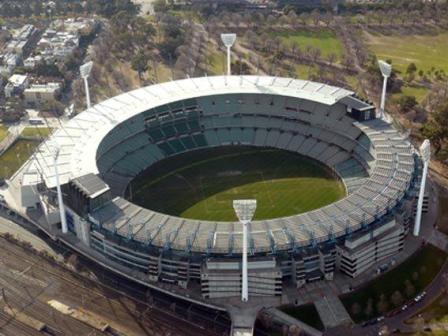
The city of Melbourne: city of sport
Competition, compromises and self-sufficiency
Andrew Whittaker reports from Melbourne where the major sports are learning to share facilities and leisure facility designers are learning to save every drop of water.

The city of Melbourne: city of sport
We are in the middle of winter here, although you would probably say that is a relative term as it is a very pleasant day with a cloudless sky and a forecast temperature of 16 degrees.
The football seasons are well underway, with rugby league and rugby union dominating in the ‘north’ (NSW and Queensland) and AFL – Australian rules football – in the southern states. Union has a great advantage as it has the Super 14 competition and can offer international games via the Tri Nations and Bledisloe Cup. However, on a weekly basis league has a more extensive competition and a higher profile. AFL continues to look at expansion across the country and is aiming to put new teams on the Gold Coast and into western Sydney. This competition between the traditional professional sports to attract corporate support, draw crowds and protect their respective patches will be an intriguing battle over the next few years, particularly as the upstart ‘soccer’ has also started to make its presence felt over the last three years. Australia has qualified for the 2010 World Cup and a bid was launched by the Prime Minister in the Great Hall of Parliament House for the 2018 and 2022 FIFA World Cups. We can do a good job but I suspect internal FIFA politics will decide the ultimate winners.
Melbourne continues to build its sporting infrastructure and a new stadium will be on the scene next year. The big two, Melbourne Cricket Ground (with 100,000 seats) and Etihad Stadium (54,000 capacity with a roof), are oval-shaped to cater for AFL and cricket. The new 30,000-capacity stadium is designed to cater for the ‘rectangular’ sports (soccer, league, union) so is currently known as the Rectangular Stadium. It is a silly name so they are looking for a naming rights sponsor to give the facility a proper name. However, the management structure of this facility is an interesting development. Unlike most stadiums, there will be three clubs operating out of the facility (Melbourne Storm playing league; Melbourne Victory playing soccer; and Melbourne in the AFL) and there have been many concessions and compromises by the clubs, including the sharing of training facilities, merchandising outlets and other common areas. It is a new model for stadium management but there are many savings and efficiencies to be gained so it should be one to watch when the stadium becomes operational in 2010.
The swine flu has had a big impact and unfortunately Victoria has been the centre of the epidemic, with over 60% of the reported cases. This has led to the cancellation of a Swim Australia event and rugby league players have been placed in quarantine back in their home state after playing in Melbourne. The medical profession has called for all big sporting events with big crowds to be cancelled to stop the spread of the swine flu virus. Think of trying to cancel Glasgow Rangers v Celtic or Liverpool v Everton games just because you might get flu and you have some idea of the reaction of the public.
Lack of water is still a major problem in the south of Australia, despite the huge rainfall and floods in the north. The dams around Melbourne are at 25% capacity (crisis level is 29%) but the government is hoping there will be winter and spring rainfalls to help ease the situation. Australia's first drought-proof aquatic and leisure facility was opened recently at Cranbourne with every possible water and energy saving measure built into the design and management processes. The A$37 million Cranbourne RACE will be virtually self-sufficient for water and will be closely monitored by the industry as it could be the basis for design of future facilities.
A new national organisation, ALFA (Australian Leisure Facilities Association), has just been launched to represent the large number of aquatic, recreation and leisure facilities throughout Australia. There has been no peak body to represent the interests of all these facilities and it has been a very fragmented industry. ALFA hopes to unite the industry and lobby to get access to national funds to support their health and community development objectives.
Needless to say, we looking forward to the summer cricket and tennis. Rest assured that after Australia’s dismal showing at the T20 World Cup the Ashes will be big news over here.
Andrew Whittaker has recently retired as chief executive of Aquatics and Recreation Victoria and is still active in the Australian sport and leisure sector.
The Leisure Review, July 2009
© Copyright of all material on this site is retained by The Leisure Review or the individual contributors where stated. Contact The Leisure Review for details.
